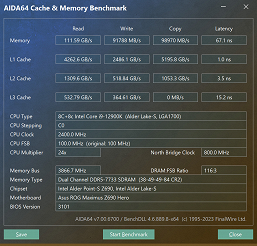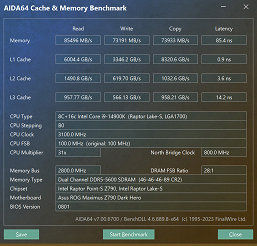In the previous year, DDR5 SDRAM unexpectedly (to many) introduced changes to a characteristic that had previously been generally taken for granted. We are talking about “non-binary” modules with a capacity that is not a multiple of a power of two. In the world of mobile devices, such solutions have been used for a long time: phones with 3 GB of RAM are still popular in the budget segment, and 6 GB have become a kind of standard between budget and “full-fledged” devices.
In computer technology, the situation was simpler for a long time — memory was in powers of two from 1 to 512. The transition from megabytes to gigabytes occurred a long time ago, but in the “personal world” the capacity of memory modules did not exceed 32 GB. In server systems, 64, 128 and even 256 GB are not surprising for a long time, but these are register modules, often with a “multi-story” arrangement of chips (3DS RDIMM). So it's no surprise that 128GB of memory for a typical PC costs the same as a single 64GB server module, but is half the price of 128GB in one piece. And prices for 3DS RDIMM 256 GB are often announced only upon request.
It's worth noting that using 128GB and 256GB modules in the same system is often not possible, so the cost of memory can be a significant portion of the cost of servers and cloud solutions.
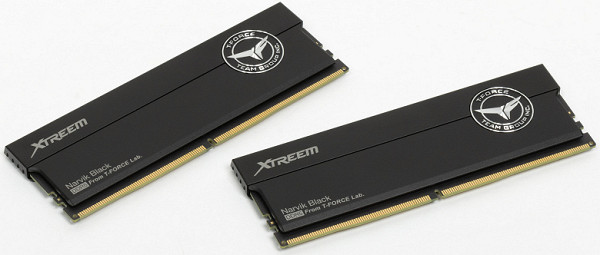
Background and results
Fortunately, the situation is not always so complicated: modern server processors support up to 12 memory channels, and sometimes it is not necessary to use maximum capacity modules, especially if you only need a few hundred gigabytes of RAM. But the price aspect still remains important. For example, when using AMD Epyc with twelve available 32 GB modules, we get 384 GB, which may not be enough for some tasks. When choosing more expensive 64 GB modules, we will immediately get 768 GB, which may be redundant and much more expensive. However, if you only need 500 GB, the problem can be solved by installing twelve 48 GB modules — potentially cheaper and without «extra» capacity.
For owners of ordinary personal computers, such difficulties are not so relevant, but they can also benefit: after all, there are fewer memory channels in a regular PC, and so do slots. For some, a total of 128 GB may not be enough, but there may not be suitable 64 GB modules. While 48 GB in each of the four slots allows you to reach a total of 192 GB.
Finally, there may be a benefit in cases where you can limit yourself to two modules instead of four. This is especially important for achieving higher frequencies, which becomes relevant when choosing DDR5 for the Intel LGA1700 platform. While there is no choice of memory type for AMD's AM5 (as well as AM4) platform, buyers are still looking to save money or get faster memory speeds, and 48GB or 24GB modules could be useful here.

However, there is nothing magical about “non-binary” memory modules. The departure from the power of two occurred due to the transition of DRAM crystals from a capacity of 16 Gbit to 24 Gbit. This transition was part of a natural process evolution that becomes more complex as die sizes get smaller. It's important to note that this change is not radical, and the basic characteristics of the 16 and 24 GB modules remain equivalent.
DRAM manufacturers have probably chosen to take things a step further with modest capacity increases. In the context of the introduction of DDR5, this may serve as an additional incentive for the transition, despite the similarity with DDR4 modules. The 48 GB modules fall in between: the capacity is higher than the 32 GB, the price is closer to the lower end for buyers, and the speed is consistent with the 32 GB modules.
So having a choice between high-clocked 64GB kits and 32GB kits creates a niche for 48GB kits. This gives users a choice based on their specific needs and budget. Updating the motherboard firmware may be the only requirement to work with «non-binary» modules, making the transition to them convenient for users. Such modules remain compatible with older systems, which is nice for those who bought them for the future.
TeamGroup T-Force Xtreem DDR5-8200

Memory module manufacturers are ready to offer their assistance in choosing products. However, it is worth noting an important point: since “non-binary” modules are manufactured using more modern crystals, they are initially subject to more stringent operating modes. While many manufacturers have switched to “binary” modules to softer modes.
An example is the testing of the TeamGroup T-Force Delta RGB DDR5-7600 kit conducted last summer. We noticed that this line previously provided single-rank modules with frequencies up to 8200 MHz. However, recent updates show that the maximum frequency for 16GB has dropped to 8000 MHz, while 24GB can reach 8200 MHz. Interesting changes also apply to the dual-rank modules: the 64 GB kit can operate at a maximum frequency of 6400 MHz, while the 96 GB can offer 7000 MHz. It is important to note that these numbers are formal promises, and actual frequency may vary depending on specific usage conditions and system characteristics.
Moreover, the influence of the environment becomes a factor when choosing the memory frequency. Manual settings can help achieve higher frequencies, but poor conditions can limit your options. The timing of hardware availability is also important, and manufacturers may recommend frequency limits for certain boards and processors. Thus, purchasing modules with the highest frequencies (whether DDR5-8000 or DDR5-8200) is recommended at your own risk, and consumers should be attentive to manufacturers' recommendations.
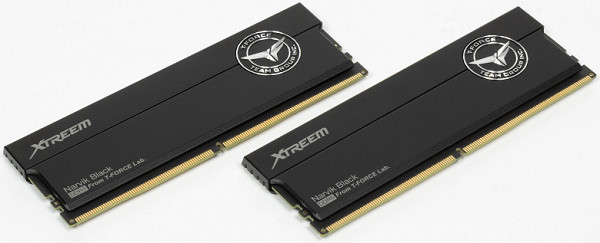
How justified is this risk? Let's remember that in the case of the T-Force Delta RGB DDR5-7600 we reached a frequency of 7467 MHz on a board for which TeamGroup does not recommend exceeding 6600 MHz. This indicates that the risk of not following the manufacturer's recommendations does not necessarily entail negative consequences. Such results are achievable with other modules on SK Hynix chips, which confirms the possibility of successful experiments.
Thus, although using memory at a higher frequency than the manufacturer recommends carries some risk, experience shows that in some cases it can be justified and lead to positive results. It is important to take into account the individual characteristics of the system and be prepared for the fact that not all systems will support exceeding the recommended values.
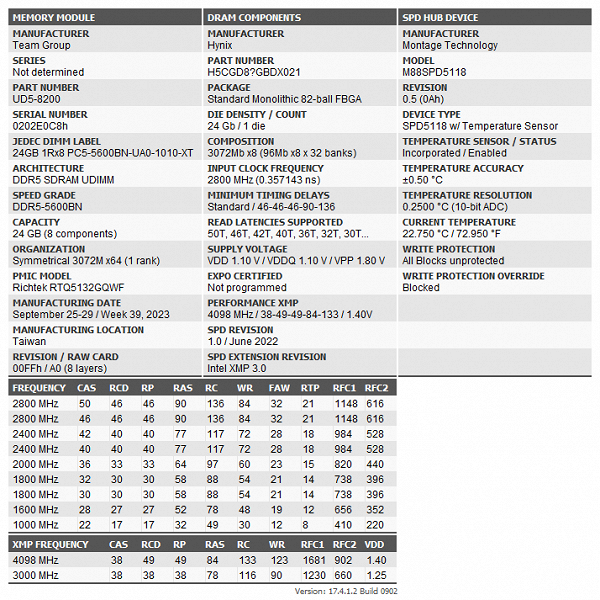
The new TeamGroup kits using «non-binary» chips come from the same manufacturer, SK Hynix, which suggests that their performance will be at least at the same level. With no changes in module organization from previous models, you can expect these new kits to perform just as reliably. It's just that where 16 Gbit/2 GB chips were previously used, 24 Gbit/3 GB chips are now used. However, to confirm this, we will conduct appropriate tests.
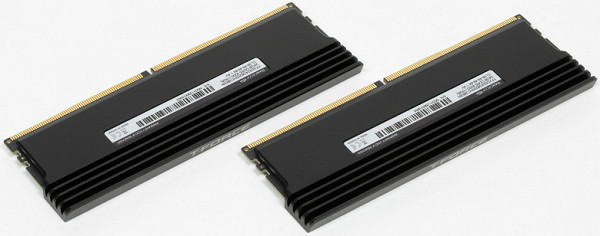
Let's take a quick look at the current position in TeamGroup's range of memory lines. As before, the Delta RGB line remains the most versatile in the T-Force family, offering modules with capacities from 8 to 48 GB, including the ability to purchase “binary” modules individually. Maximum clock speeds depend on capacity and number of ranks, with “non-binary” modules demonstrating higher speeds. For example, 96GB DDR5-7000 kits that were previously out of stock provide new options for consumers. The Xtreem family, with new single-rank modules, is offered only in pairs and provides minimum frequencies of 7600 MHz, designed for the most demanding users. Note that, unlike past times when DDR4 Xtreem ARGB modules were presented with backlighting, DDR5 versions do not yet have this option. If backlighting is important, it is recommended to pay attention to Delta RGB. If maximum performance is required, then the choice may fall on Xtreem. It's important to note that while Delta RGB provides similar products, some of the subtleties and features may be difficult to capture in the technical specifications.
Testing
To begin with, we decided to check the compatibility of the new modules with previous platforms, using, as usual, the Core i9-12900K processor and the Asus ROG Maximus Z690 Hero motherboard on the Intel Z690 chipset. Both products have been on the market for over two years and are the original version of Alder Lake with the very first DDR5 controller on the market. It is important to note that the ability of this controller to achieve high frequencies is already considered limited. Nevertheless, as we have already seen many times, a frequency of 7000 MHz on this board with this processor is achievable — provided that the modules allow it. And perhaps there is a small margin in frequency. What exactly is the reserve in this case?
Initially, the memory is installed in DDR5-5600 mode, which is the standard JEDEC profile. At the same time, TeamGroup did not skimp on certification, which is a positive point. At the beginning of the introduction of the DDR5 standard, this frequency was considered very decent, but over time the standards have changed. To meet modern requirements, two XMP profiles are provided: with frequencies of 6000 and 8200 MHz. There are no problems with the first profile, since this is not overclocking taking into account modern standards. The second profile, as expected, is not compatible with the Z690 board. However, by gradually reducing the frequency, it was possible to achieve stable operation of the kit at a frequency of 7733 MHz, which turned out to be an unexpected and positive result. The answer to the question of how much credit goes to the memory modules themselves or to updated firmware and microcode (which Intel regularly updated) remains unclear. A full study may be conducted in the future, but for now the focus is on a specific set of modules.
This set, as the memory manufacturer clarifies, requires a more modern system. Thus, for testing, a system was assembled based on the latest Core i9-14900K processor and the Asus ROG Maximus Z790 Dark Hero motherboard on the Z790 chipset.
The frequencies confidently rose to 7767 MHz, surpassing even the 7800 MHz mark indicated in the TeamGroup knowledge base for Asus boards on the Z790. It is worth noting that this particular board and modules are not in the database. It might be worth trying a Gigabyte board, which promises frequencies of at least 8000 MHz for some models.
When installing two modules, as a rule, the system operates at a higher frequency than when using four modules, and one module, accordingly, has an even higher frequency. If one module is installed, the system can run at 8200 MHz, and even the Windows operating system can be loaded. However, running memory tests results in a blue screen. In addition, this mode of operation makes little sense: a dual-channel configuration with a frequency of DDR5-7767 or even DDR5-7733 is in practice preferable to a single-channel configuration with DDR5-8200.
To further illustrate this, we've presented the results on both systems in chart form, starting with the throughput analysis.
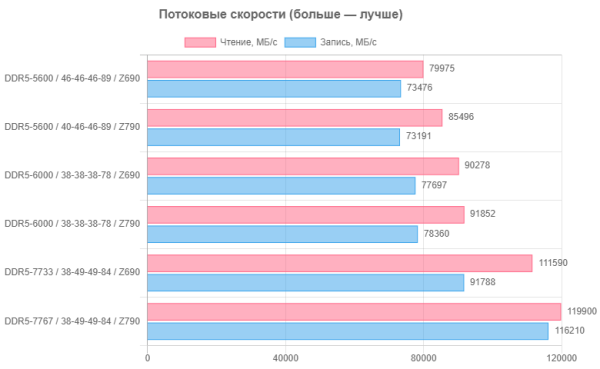
Definitely, the higher the frequency, the higher the read and write throughput. At the same time, the new Core i9-14900K processor copes with this task more efficiently, especially at higher operating modes, although at low frequencies the difference may not be noticeable.
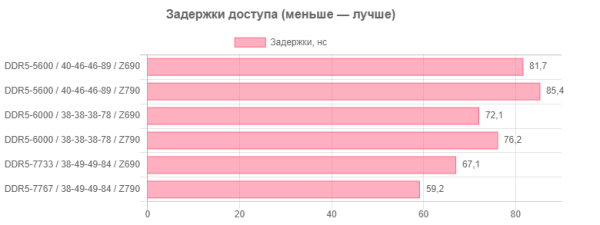
Latencies in the old system looked more favorable until we switched to the maximum available mode. While the controller has been redesigned in Raptor Lake, the changes don't appear to be too drastic. Significant changes will probably have to wait until the end of the year, when the new LGA1851 platform will appear with updated processor cores and memory controller (without DDR4 compatibility). However, most likely there will be no changes within the LGA1700 in the coming months.
Total
Our impressions of the TeamGroup T-Force Xtreem DDR5-8200 48 GB kit on the new platform did not please us as much as on the “old” system. Perhaps the results will improve over time and the frequencies will stabilize. In the current situation, achieving 8 GHz requires maximum efficiency not only from the memory, but also from the processor and motherboard. Moreover, success may depend not only on the model, but also on specific specimens. You may need to manually adjust settings rather than relying solely on factory settings. If this is a concern, then it may be worth considering the T-Force Xtreem kit at 7600 MHz — guaranteed to be stable for the Alder Lake platform. You may be able to squeeze out extra performance, but it will depend on your efforts and experience.

However, our interest is not primarily aimed at testing high-speed memory kits. Everything is clear with them: working at the limit requires high standards from all system components. If you decide to avoid risks, there is an opportunity to save. Much more exciting were the global issues related to “non-binary” modules. In this regard, we have no complaints: they are, at a minimum, not inferior to the usual “binary” ones. In fact, they're even better in every way. Their capacity is higher — both in absolute values and with the same organization: single-rank modules have increased from 16 GB to 24 GB. Now you have the opportunity to install not just 32 GB of the fastest memory on your computer, but as much as 48 GB. The gap between the standard volumes of 32 and 64 GB was too large, and the intermediate value of 48 GB becomes more than relevant. For those who think 64GB isn't enough but 128GB is already overkill, 192GB is now available—with no system change required. Of course, you need to have a computer that supports DDR5, but these models have been on sale for more than two years, and many of them require an upgrade, especially those that were built with a 16 GB memory kit, which was relevant two years ago.
In addition, the new 24 Gbit memory chips are characterized by high technical performance, including achievable clock speeds. There may be problems with maximum frequencies in practice, but the 7 to 8 GHz range is becoming more accessible. There is also a chance to reduce prices for modules on new crystals, and “intermediate” values of memory volume bring savings in absolute terms. It’s a rare occurrence when there are practically no disadvantages — only advantages. We have received only positive reactions to the introduction of such kits to the market. This applies to both models for true enthusiasts and more modest options.

